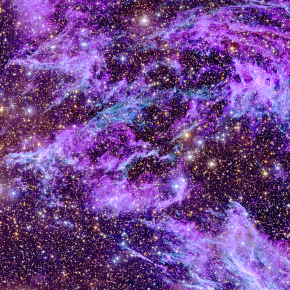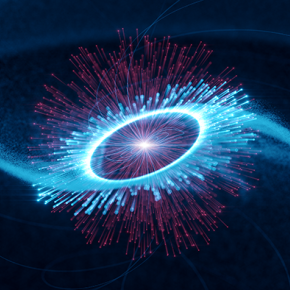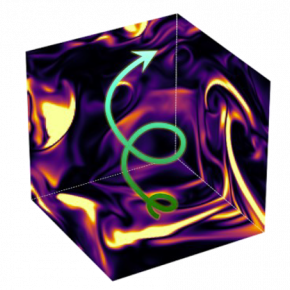Cosmic Rays ___________________________________________________________
The century-old study of cosmic rays is still going strong, with numerous measurements underway over an energy range covering almost 14 orders of magnitude (e.g. AMS-02, CALET, DAMPE, Nucleon, Fermi-LAT, H.E.S.S, Observatoire Pierre Auger, Telescope Array, Voyager). The multiple spectral breaks, abundances and anisotropies observed give us ever more clues for identifying the sources and understanding the transport of galactic (MeV-PeV) and extra-galactic (higher-energy) cosmic rays.
At galactic energies, the spectrum of nuclei provides constraints on the propagation of charged particles. The discovery of a new spectral break at a few hundred GeV and the observation of pockets of “slow” scattering around supernova remnants highlight the feedback mechanisms between cosmic radiation and magnetic turbulence. Low-energy cosmic rays also play an essential role in the physico-chemistry of the interstellar medium, and more generally in gas dynamics on a galactic scale. The search for sources of galactic cosmic radiation is progressing with observations of supernova remnants, star clusters and even the central regions of the galaxy, with the detection of galactic diffuse emission from radio to γ, now extending into the PeV range. At the highest energies, recent data confirm that the composition becomes heavier with energy above 1 EeV. The origin of the particles remains mysterious, although the detection of a dipolar component in the arrival directions, weaker anisotropies at extreme energies, or even the observation of simultaneous gamma/neutrino events (from a blazar; see previous section) opens up new perspectives.
The question of the origin of cosmic rays is intrinsically a multi-messenger astrophysics issue (hadronic interactions of accelerated nuclei produce high-energy neutrinos and photons) and multi-scale (turbulence microphysics, gas shocks and feedback, cosmic rays and radiation). It therefore benefits from progress made in improving observations and their interpretation, but also in the microphysical (plasma) modeling of these phenomena and from numerical advances in this field.




